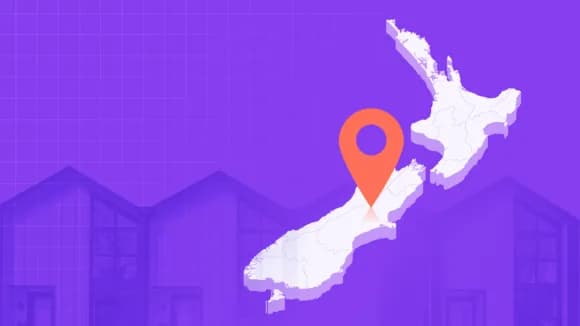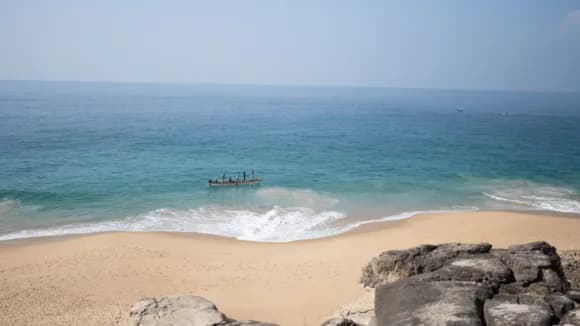
Property Market
What's happening with NZ house prices right now?
Get the latest insights on New Zealand’s property markets, including trends, growth areas, and investment opportunities across regions.
Property Market
7 min read

Author: Ed McKnight
Resident Economist, with a GradDipEcon and over five years at Opes Partners, is a trusted contributor to NZ Property Investor, Informed Investor, Stuff, Business Desk, and OneRoof.
Reviewed by: Laine Moger
Journalist and Property Educator, holds a Bachelor of Communication (Honours) from Massey University.
Loading...
As at October 2025, the median house price in Northland is $690,000. This is up from $360,000 10 years earlier. That means that the median Northland property increased in value by 6.72% each year, or $33,000 on average.
The most expensive suburb in Northland is Mangawhai Heads, which has a median house price of $1,272,600 and is located in the Kaipara District district. That means that Mangawhai Heads's median house price is 184% of Northland’s median.
The least expensive suburb in Northland is Ruawai, which has a median house price of $397,800 and is located in the Kaipara District district. That means that Ruawai's median house price is 58% of Northland’s median.
Over the last 24 months (Dec 2023 - Dec 2025), Kaikohe had the fastest-growing house prices in all of Northland, at 8% per year.
The suburb that grew the slowest over that period was Ngunguru, which grew at a rate of -5% per year.
Loading...
Northland house prices look relatively cheap compared to where we'd expect them to be.
In the above graph, when the purple line is below the baseline (black line), Northland's house values are undervalued. This suggests there is a buying opportunity in the region.
When Northland’s house values are above the baseline, other regions have buying opportunities.
How is this calculated? Click on the accordions below to find out.
This map lets you find out for yourself.
Each area represents a different suburb, and the colour of the area represents how quickly house prices have increased over the past 20+ years.
The redder the area ... the quicker house prices have grown in that suburb.
Gross yields vary widely depending on which suburb you chose to investigate.
So, which suburbs in the Whangarei property market have the highest gross rental yields?
Navigate the map to find the suburbs where houses produce the most cash for their investors.
The map below depicts which districts within the Northland Region have the most and least affordable house prices (REINZ, October 2025).
The darker the district, the more expensive the median house price for that area.
The Kaipara District is the most expensive district within the Northland Region, with properties reaching a median price of $757,000 in October 2025.
By comparison, the Whangarei District is the most affordable, with a median house price of just $667,000. That's a $90,000 difference compared to Kaipara District.
This map shows a breakdown of how over or under-valued each council area is right now in the Northland property market. These figures are calculated exactly the same way as the HPI based graph in the above section.
Kaipara District appears to be the most overvalued area in Northland. House prices there are about 13.51% above where we would usually expect them to be over the long term.
Whangarei District, on the other hand, appears to be the most undervalued in Northland. House prices in this district appear to be 4.48% below where we would expect them to be.
This means that we've got greater confidence that Whangarei District house prices will increase faster over the next 5-10 years compared to Kaipara District.
The map below illustrates the projected population growth for each district within the Northland Region over the next 25 years (2023 - 2048).
The darker the district, the more the population is predicted to expand in that area.
Over this period, Kaipara district is expected to see the most growth of all the council areas within the region. 21.66% in total.
By contrast, Far North district is expected to grow by 14.59% over the same timeframe.
Loading...
The above graph shows how quickly house prices have increased or decreased over the previous 12 months. This is also known as ‘capital growth’.
So does this show how the property market is going right now?
Yes and no.
It shows how expensive properties are today compared to 12 months ago.
While this will give us a good sense of how property values have changed, it’s not the only thing to consider.
You might also look at how quickly property values are going up (or down) from month to month, the number of property sales and how quickly properties are selling.
Loading...
The above graph shows the median rent within a given month.
The data comes from the Ministry of Business Innovation and Employment (MBIE) and is provided through their Tenancy Services website.
Their data is based on all the rental bonds lodged by private landlords within the month.
Loading...
This graph shows the annual growth in median rents.
The data also comes from the Ministry of Business Innovation and Employment (MBIE).
Loading...
This graph shows current property listings, with data sourced from realestate.co.nz.
It shows the number of listings that are currently available on the website per month.
You might be wondering: “How do the number of listings impact house prices?”
If many listings are available, then people will think there is lots of supply. This means that people feel like they can take their time choosing a property.
This leads to less competition and softer house prices.
On the other hand, if there aren’t many listings available, people will feel like there is a shortage of houses. This leads to FOMO (fear of missing out).
This makes people more competitive and more likely to bid up house prices.
Loading...
The above graph shows the total number of properties sold over the prior 12 months. For example, if looking at the data for August 2023, the graph will show all the sales between September 2022 – August 2023.
The data comes from the REINZ Market Insights Report and The Real Estate Institute of New Zealand (REINZ) collects data directly from agents.
You might be wondering: “How does the volume of sales impact house prices?”
They don’t impact house prices on their own. But a high number of sales represents a hot property market.
That’s because there are a lot of people out there buying property.
That’s why when sales volumes are high, property prices typically increase at the same time.
When property sales are falling, typically, property prices are also soft.
Loading...
Whangarei District is made up of 26 suburbs. The most expensive suburb is One Tree Point, which has an average house value of $1,067,350. While the most affordable suburb is Raumanga, which has an average house value of $462,550.
Over the last 24 months of all the Whangarei District suburbs (Dec 2023 - Dec 2025), One Tree Point had the fastest-growing house prices at 1.55% per year.
The suburb that grew the slowest over that period was Ngunguru, which grew at a rate of -5.05% per year.
Loading...
Kaipara District is made up of 9 suburbs. The most expensive suburb is Mangawhai Heads, which has an average house value of $1,272,600. While the most affordable suburb is Ruawai, which has an average house value of $397,800.
Over the last 24 months of all the Kaipara District suburbs (Dec 2023 - Dec 2025), Baylys Beach had the fastest-growing house prices at 0.54% per year.
The suburb that grew the slowest over that period was Ruawai, which grew at a rate of -3.36% per year.
Loading...
Far North District is made up of 24 suburbs. The most expensive suburb is Kerikeri, which has an average house value of $908,750. While the most affordable suburb is Kaikohe, which has an average house value of $398,750.
Over the last 24 months of all the Far North District suburbs (Dec 2023 - Dec 2025), Kaikohe had the fastest-growing house prices at 7.81% per year.
The suburb that grew the slowest over that period was Pukenui, which grew at a rate of -3.68% per year.
If you found this article useful, then you might also like our analyses on the other property markets in New Zealand. You can read all about the Auckland property market, the Wellington property market and the Christchurch property market by clicking any of the links mentioned here.
Resident Economist, with a GradDipEcon and over five years at Opes Partners, is a trusted contributor to NZ Property Investor, Informed Investor, Stuff, Business Desk, and OneRoof.
Ed, our Resident Economist, is equipped with a GradDipEcon, a GradCertStratMgmt, BMus, and over five years of experience as Opes Partners' economist. His expertise in economics has led him to contribute articles to reputable publications like NZ Property Investor, Informed Investor, OneRoof, Stuff, and Business Desk. You might have also seen him share his insights on television programs such as The Project and Breakfast.
This article is for your general information. It’s not financial advice. See here for details about our Financial Advice Provider Disclosure. So Opes isn’t telling you what to do with your own money.
We’ve made every effort to make sure the information is accurate. But we occasionally get the odd fact wrong. Make sure you do your own research or talk to a financial adviser before making any investment decisions.
You might like to use us or another financial adviser